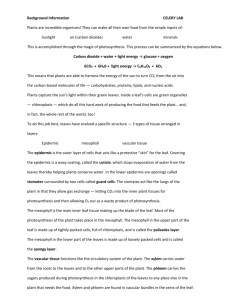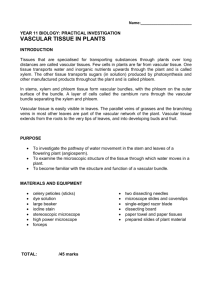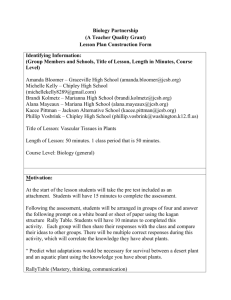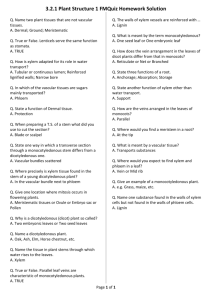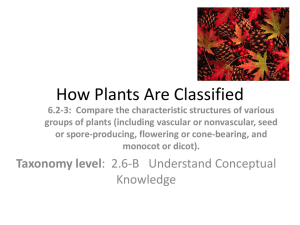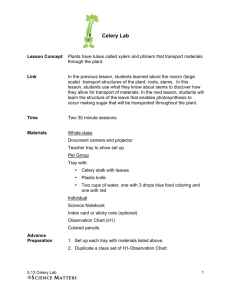Water movement through Xylem in Celery
advertisement
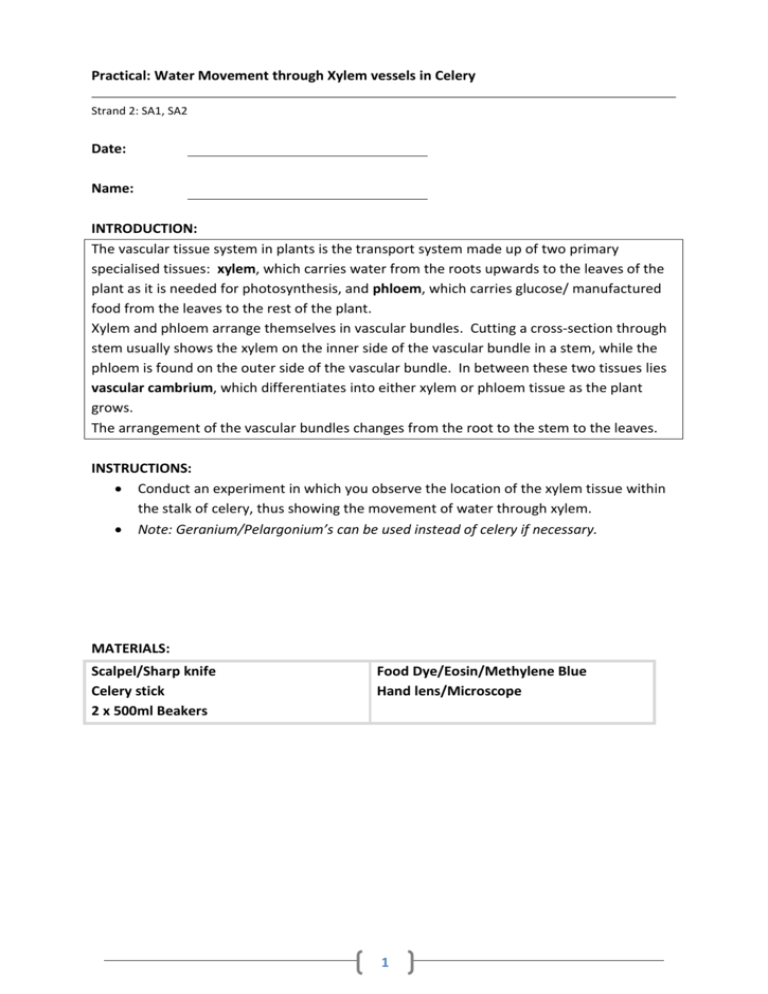
Practical: Water Movement through Xylem vessels in Celery Strand 2: SA1, SA2 Date: Name: INTRODUCTION: The vascular tissue system in plants is the transport system made up of two primary specialised tissues: xylem, which carries water from the roots upwards to the leaves of the plant as it is needed for photosynthesis, and phloem, which carries glucose/ manufactured food from the leaves to the rest of the plant. Xylem and phloem arrange themselves in vascular bundles. Cutting a cross-section through stem usually shows the xylem on the inner side of the vascular bundle in a stem, while the phloem is found on the outer side of the vascular bundle. In between these two tissues lies vascular cambrium, which differentiates into either xylem or phloem tissue as the plant grows. The arrangement of the vascular bundles changes from the root to the stem to the leaves. INSTRUCTIONS: Conduct an experiment in which you observe the location of the xylem tissue within the stalk of celery, thus showing the movement of water through xylem. Note: Geranium/Pelargonium’s can be used instead of celery if necessary. MATERIALS: Scalpel/Sharp knife Celery stick 2 x 500ml Beakers Food Dye/Eosin/Methylene Blue Hand lens/Microscope 1 AIM: To locate the position of xylem in the stalk of celery. METHOD: 1. Cut a fresh stalk of celery underneath water and place quickly into a beaker containing food dye (eosin/methylene blue may also be used). 2. At intervals of about 10 minutes, without removing the shoot from the dye, study the stem and leaves to see if there is any evidence of movement of the dye. Note which leaves, if any, have the dye in their veins. 3. Leave the celery for 30 minutes and then do a final observation on the colouring of the stems and leaves. 4. Fill a beaker or jar with cold water for rinsing the dye off the stem. 5. Remove the shoot from the dye and carefully wash the dye from the stem, in the jar of water. With a razor blade or scalpel cut across the stem a few millimetres from the bottom (fig. 1), avoiding the region which has become deeply stained with the dye. 6. Examine the cut surface of the stem with a hand lens/microscope and make a simple outline diagram to show the distribution of dye in the stem. 7. If the shoot is not needed for further experiments, the stem can be cut across at higher levels to see how far the dye has travelled. Fig.1 Cut a cross section through the celery to examine the vascular bundles 2 RESULTS: Here is an example of what you would see with a magnifying glass or with a microscope. Fig.2 Cross section view of celery under microscope (8X) Fig.3 Magnification of the vascular bundle clearly shows 3 distinct layers, the darkest dyed tissue being xylem (36X) Vascular Bundle Fig.4 Drawing of the tissues of the vascular bundle 3 CONCLUSION: Xylem vessels run along the ____________________ of the celery stick stem, while the phloem vessels run along the ____________________. QUESTIONS: 1. Name the tissue that was stained by the dye. (1) 2. What can you conclude regarding the function of xylem tissue? (2) 3. Explain two ways in which xylem is modified to carry out its function: (4) TOTAL 7 MARKS 4
